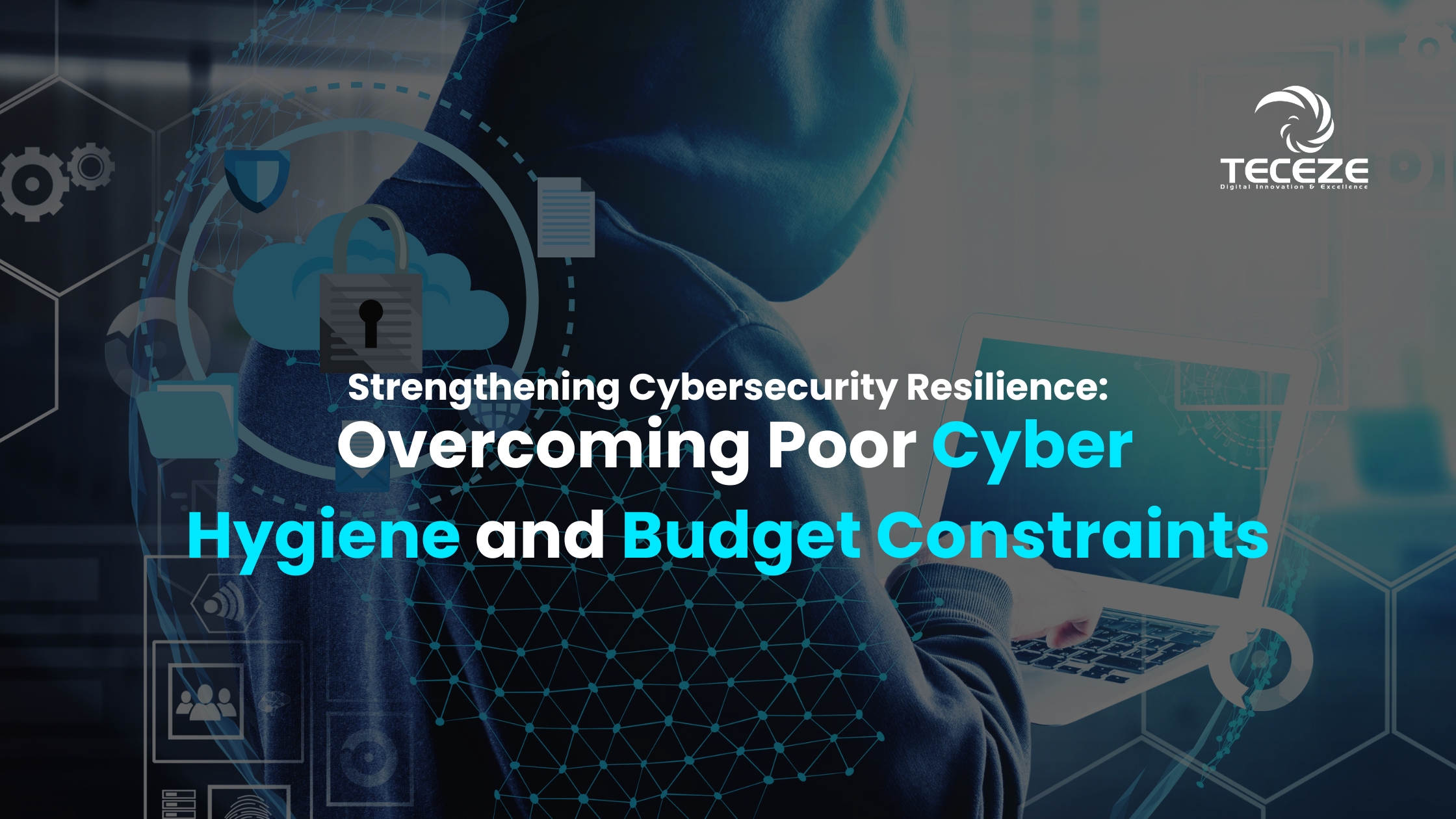Overcoming Poor Cyber Hygiene and Budget Constraints
Table of Contents
Importance of Cyber Hygiene with Cybersecurity Resilience
In today's digital age, where technology serves as the backbone of modern business operations, cybersecurity has become a cornerstone of organizational resilience. However, despite the growing awareness of cyber threats, many organizations still find themselves ill-prepared to defend against sophisticated attacks. A combination of poor cyber hygiene practices and inadequate budgets leaves them vulnerable to cybercriminals seeking to exploit weaknesses for financial gain or malicious intent. We'll explore the challenges posed by poor cyber hygiene and limited budgets and discuss strategies to strengthen cybersecurity resilience.
The Consequences of Poor Cyber Hygiene
Cyber hygiene refers to the practices and protocols individuals and organizations adopt to safeguard their digital assets and data. Unfortunately, lax cyber hygiene practices, such as weak passwords, unpatched software, and lack of employee training, can leave organizations vulnerable to a variety of cyber threats, including phishing attacks, malware infections, and data breaches. These vulnerabilities not only jeopardize sensitive information but also damage brand reputation, erode customer trust, and incur significant financial losses.
Budget Constraints and Their Impact on Cybersecurity
Inadequate cybersecurity budgets present another significant challenge for organizations striving to protect against evolving cyber threats. Many businesses, particularly small and medium-sized enterprises (SMEs), struggle to allocate sufficient resources to cybersecurity initiatives due to competing priorities and limited financial resources. Consequently, they may lack the necessary tools, technologies, and expertise to effectively detect, prevent, and respond to cyber-attacks, leaving them at a distinct disadvantage in the cybersecurity arms race.
Strategies for Strengthening Cybersecurity Resilience
Despite these challenges, organizations can take proactive steps to bolster their cybersecurity resilience and mitigate the risks associated with poor cyber hygiene and budget constraints:
-
Prioritize Cyber Hygiene: Implement robust cyber hygiene practices, such as regular software updates, strong password policies, employee training and awareness programs, and multi-factor authentication, to minimize the risk of common cyber threats.
-
Invest Wisely: Allocate resources strategically to cybersecurity initiatives based on risk assessment and prioritization. While budgets may be limited, investing in essential security controls, threat intelligence, and employee training can yield significant dividends in terms of improved cyber resilience.
-
Embrace Automation and Technology: Leverage automation and advanced cybersecurity technologies, such as endpoint detection and response (EDR), security information and event management (SIEM), and threat intelligence platforms, to enhance threat detection, incident response, and overall security posture.
-
Foster a Culture of Security: Cultivate a culture of security awareness and accountability across the organization, from the executive leadership to front-line employees. Encourage open communication, collaboration, and continuous learning to empower individuals to play an active role in defending against cyber threats.
-
Collaborate and Share Intelligence: Engage with industry peers, government agencies, and cybersecurity experts to share threat intelligence, best practices, and lessons learned. Collaborative efforts can help organizations stay ahead of emerging threats and strengthen collective cyber defense capabilities.
Conclusion
In an increasingly interconnected and digitized world, organizations must recognize the critical importance of cybersecurity resilience in safeguarding their digital assets, reputation, and long-term viability. By addressing poor cyber hygiene practices, optimizing cybersecurity budgets, and adopting a proactive and strategic approach to cybersecurity, organizations can better defend against cyber threats and navigate the evolving threat landscape with confidence. Together, we can build a more resilient and secure digital ecosystem for all stakeholders.
 Back to Insights
Back to Insights
 Previous
Previous 